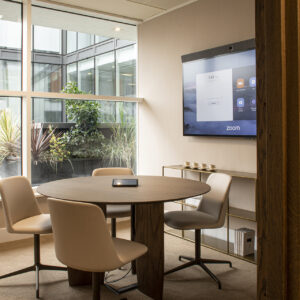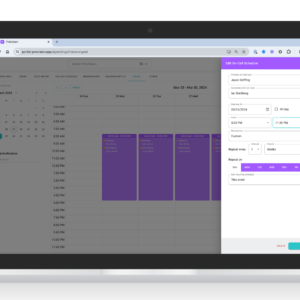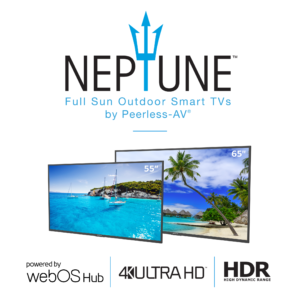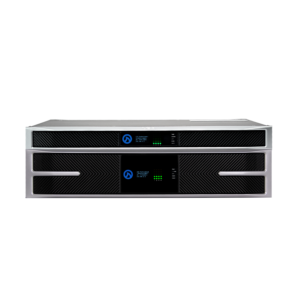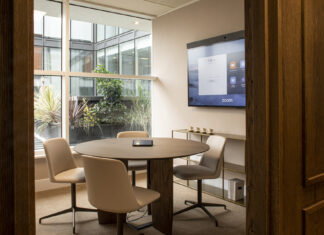After a nearly two-year hiatus from touring, Colombian singer-songwriter Juan Luis Londoño Arias—better known as Maluma—joyously hit the road for his two-month, 27-stop Papi Juancho Tour in support of his fifth Sony Music Latin studio album, which dropped in August 2020. Although Clair Global provided a Cohesion CO-10 PA system and touring support for the Latin Grammy-winning artist’s third large-scale tour of North American arenas, the front-of-house and monitor mixes were both performed on a new pair of DiGiCo Quantum338 consoles that Maluma purchased for his own touring inventory.
“I’ve been mixing on DiGiCo consoles for at least 15 years now and they’ve always been my favorites,” says Lucas Pinzón, who has spent the past six years running FOH for the reggaeton/pop superstar that has collaborated with everyone from Shakira, Jennifer Lopez, and Madonna to Ricky Martin, J Balvin, and The Weeknd. “In my early days with Maluma, I worked on a variety of consoles—SD8, SD10, SD5—that were provided by local suppliers. He eventually acquired his first package of consoles and peripherals that included an SD12, which I really enjoyed for its compact size and comprehensive processing. But now that Maluma’s show and channel count have grown, we’ve upgraded to the Quantum338 platform and it’s been fabulous! The console is so versatile, robustly solid, and has a consistently clear and beautiful sound.”
The artist’s latest trek sold out nearly every show and included stops at L.A.’s The Forum, NYC’s Madison Square Garden, Atlanta’s State Farm Arena, and Sacramento’s Golden 1 Center. For the tour leg, Pinzón’s FOH console was on an optical loop with two 56-in/24-out SD-Racks, each paired with an AES/EBU output card, and an SD-Nano Rack, fully loaded with 32-bit I/O modules. The Quantum338 was further equipped with a DMI-DANTE 64@96 card to provide digital PA system sends, while 64 channels coming from the racks served as an analog backup. The console’s second card slot housed a DMI-WAVES module for running the Waves backup system, “since I run the main one from the native Waves port that comes with the console,” he notes. Both recording and virtual soundcheck were accomplished over BNC via a DiGiGrid MGR MADI-to-SoundGrid interface supplying 128 channels of 96kHz audio to a REAPER digital audio workstation.
“Having mixed on many DiGiCos, I have to say that Quantum’s sonic difference is quite noticeable, and I absolutely love the Mustard processing and Spice Rack!” Pinzón enthuses. “I’ve found that applying Mustard on my most important input channels gives me the ability to be more precise and create solutions that weren’t possible before, like doing one parallel compression per channel, for example. And as for the Spice Rack, I enjoy using it to make changes on certain channels that I have customized for specific songs and then control those changes through my snapshots. Even though I still complement my mixing with some ‘small brushstrokes’ of Waves, I predominantly use the console’s onboard processing for most things because it’s super-functional, very user-friendly, and sounds fantastic. The sonic quality of this console has allowed me to take my mix to another level.”
While Pinzón manned approximately 90 input channels at the FOH position each night, monitor engineer German Tarazona worked his mixes from a remote bunker, given the artist’s use of a 360-degree stage. With the band occupying the four sunken pockets of an X-shaped stage, Tarazona utilized his Quantum338 to create 12 principal stereo IEM mixes for the singers and musicians, four stereo mixes for guests, two spare mixes for the band, and eight channels in a different frequency band for cities with heavy RF congestion, like Dallas, Houston, Phoenix, and Los Angeles.
“This has been my first tour using DiGiCo, and I can tell you after 27 shows that it’s been the best change I could have made!” he says. “On previous tours, when Lucas was running an SD12, I was on another brand, which wasn’t ideal for unifying the overall sound. We’ve been hoping to move to the same type of console for a while now, and we finally found the right choice. We both wanted our artist to feel that his in-ear mix and the room mix are very similar, so he can enjoy his show to the maximum, and we’ve absolutely achieved that now with the Quantum338 desks.”
Tarazona calls out new Quantum features like Nodal Processing and True Solo as perfect examples for why he’s been so pleased. “Those two tools are a game-changer for me as a monitor engineer—being able to deliver different sounds from the same instrument to the musicians makes my mixing experience very enjoyable. And the Spice Rack is amazing too. I have inserted my playback tracks into it, which sounds great and helps me to preserve the dynamics of my sequences.”
The ability to have a dedicated talkback on each mix is “very agile,” he reports. “I don’t need to make multiple assignments, and everything is designed to give me quick access to the musicians. Speaking of which, I use the wide option on the stereo channels to enhance the stereo image in the IEMs, as well as different types of reverbs in order to provide wonderfully warm-sounding mixes.”
In addition to his two SD-Racks loaded with 32-bit I/O cards, Tarazona also has an SD-MiNi Rack in his insert rack for analog inserts. Two AES/EBU cards facilitate connection with four Bricasti effects units to “provide spatiality in my artist’s in-ears,” while two analog cards interface with the vocal processors: a Rupert Neve Designs Shelford Channel and Portico 5045 for “reducing the ambiance on the microphones,” he describes. Like the FOH desk, the DiGiCo monitor console is also equipped with a DMI-WAVES card. “Although I have some plugins and external processors ready to use, I haven’t really used them much. The sound of this new console is far superior to what I was using before and I have found in the Quantum338 every solution to my needs.”
Both engineers agree that virtual soundcheck has been a fundamental tool for the tour. “Due to the technical complexity of the setup, we do not have a regular soundcheck—only a line check before the show,” Pinzón notes. “So when I want to correct something or make an improvement to the mix of a certain song, I pull up the virtual soundcheck of the previous show, run through the snapshots, then calmly work them until I find the right result. That’s a tremendous help.”
The 1000-nit brightness, size, and viewing angle of the Quantum338 screens are also a welcome improvement from other desks the duo have used. “Even for outdoor shows, these consoles are very comfortable and easy to work on—the sun never bothers us anymore,” he says. “In fact, it really lights up the beauty of these boards. That blue is gorgeous.”
In early March, Maluma will take his Papi Juancho Tour to Europe and the UK, followed by later dates in Latin America, Asia, and elsewhere around the world. “We’ll be taking our DiGiCo consoles everywhere with us,” Pinzón adds. “After a long mandatory stop due to the pandemic, we’re more than happy to be back on the road, and our Quantum consoles are ready and eager to work too!”
For more details on Maluma’s upcoming performances, visit www.maluma.online.

